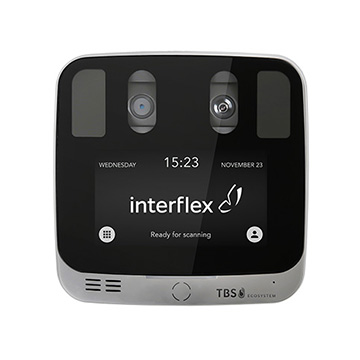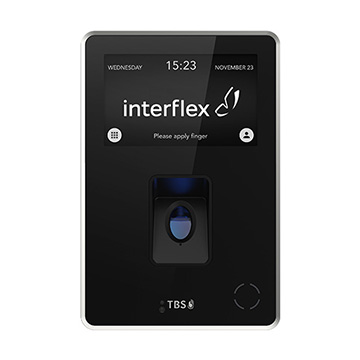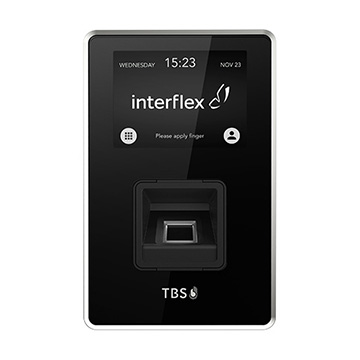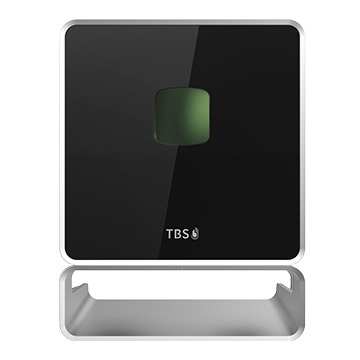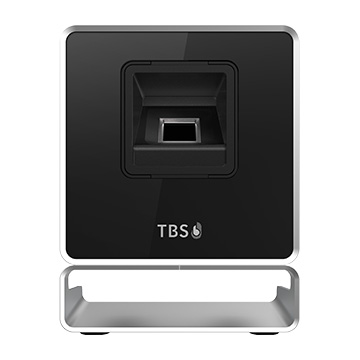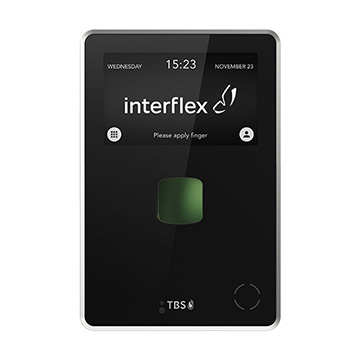Biometric terminals
for access control
With biometric recognition methods, you can significantly increase the security in your company. Unlike conventional systems for person identification, biometric terminals do not use a PIN or a credential, but rather biometric features of the authorized person. They positively identify a person based on their fingerprints, veins, iris or face. A PIN or an RFID credential provide additional verification for biometric processes. The solutions can be seamlessly integrated into your IT structures and the IF-6040 access system.
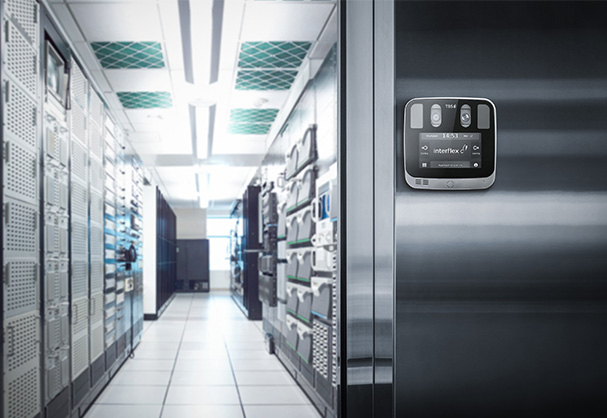
Biometric terminals
Unlike a PIN or a credential, biometric features of one’s own body cannot be forgotten or lost, nor can they be passed on intentionally or unintentionally. Corresponding identification procedures are thus more secure. Biometric processes represent a sensible addition or replacement to conventional identification methods like PIN or RFID.
Recognition based on individual physical features such as fingerprints or veins takes place in two steps: First, a person’s characteristics are recorded during enrollment and stored as a reference. Later, when this person wants to identify themselves at a terminal, the biometric features are recorded again for authentication purposes and compared with the stored reference. If the features match sufficiently, the person is deemed authenticated. In addition, the software checks the physical features recorded for identification for forgeries in order to rule out any unauthorized access. The image quality and stability of the image recording at the start of the biometric process are decisive for the performance during identification. The higher the image quality, the higher the identification performance – and thus the selection of the sensor is crucial for success.
We only offer you what we believe to be reliable and innovative biometric terminals from our partners, such as the products from TBS Touchless Biometric Systems AG or PCS Systemtechnik GmbH. This ensures that you benefit from state-of-the-art integrated solutions.
The IF-6040 software solution manages the different biometric processes and features of the users as well as the individual terminals centrally. The latest version of our system supports the TBS Biomanager Enterprise R20 for managing users and devices. Seamless integration means that enrolment and management can be carried out completely and remotely via the IF-6040, so that biometric features can be captured directly on site at the TBS terminal. The physical presence of the operator or administrator on site is no longer necessary. The new remote enrollment process is supported by the latest generation of devices, including 2D SENSE, 2D IRON, 3D AIR, 3D LIGHT and soon the new 3D FLASH+ model.
2D fingerprint recognition
The 2D recognition of a fingerprint when touching the biometric terminal offers a high level of security. Access control and time recording are carried out with the terminal. Optionally, a multifactor authentication combining fingerprint and PIN can provide additional security. This fingerprint recognition is a low-cost, easy-to-use and very reliable method. It is a tried and tested standard that delivers good identification performance for smaller groups of up to about 1,000 persons. In addition, “Exception Handling” is necessary for individuals using a PIN or RFID credential.
Multispectral 2D recognition is suitable for medium to large groups of users with 1,000 to 5,000 persons and very high level of security. It is considerably more cost-effective than iris, vein or face recognition and even reads when fingers are dirty, in harsh environments and under the skin.
Touchless 3D fingerprint recognition
The three-dimensional, touchless fingerprint recognition on the biometric terminal delivers maximum security. This is used for access control and time recording. A multifactor authentication combining fingerprint, PIN and RFID credential is optional. A live finger detection also provides additional security. This form of identification is hygiene-compliant, since the terminal is not touched. The process also offers very good identification performance for large user groups of up to 10,000 persons and is significantly more cost-effective than iris, vein or face recognition.
Iris recognition
Iris recognition offers the highest level of security. This is used for access control and time recording. The iris is recorded without contact, which means that this form of identification is hygiene-compliant. The level of security is comparable to that of a palm vein scanner. The process is also suitable for very large user groups of up to 10,000 persons. Optionally, a multifactor authentication combining iris, PIN and RFID credentials can provide additional security.
Contactless palm vein recognition
Contactless palm vein recognition using PalmSecure technology delivers maximum security for access control. The technology is based on the fact that venous blood absorbs infrared rays. The sensor illuminates the hand with infrared light, allowing the camera to verify the image of a person’s vein pattern. The method can identify user groups of up to 1,000 persons. The level of security is comparable with that of iris recognition. A multifactor authentication combining palm veins, RFID credential and PIN is optional. A live finger detection also provides additional security. This form of identification is hygiene-compliant, since the terminal is not touched.
Product overview
Do you have any questions? We are happy to help you!
To reach the appropriate contact person at Interflex, please select the suitable contact method. If you are already a customer, kindly use the Contact form ”I am an Interflex customer” and get in touch with the desired department via email.
If you haven’t had any previous interactions with Interflex but are interested in our solutions, we would be pleased to receive your inquiry through the Contact form ”I am interested in becoming a customer” We will endeavor to respond to you promptly.
Do you have a question, require information, or wish to share feedback with us? Please select the relevant department for your inquiry:

Service:
For technical questions and error reports, please send an email to:


Feedbackmanagement:
Would you like to provide us with feedback? Please feel free to send us an email to:

